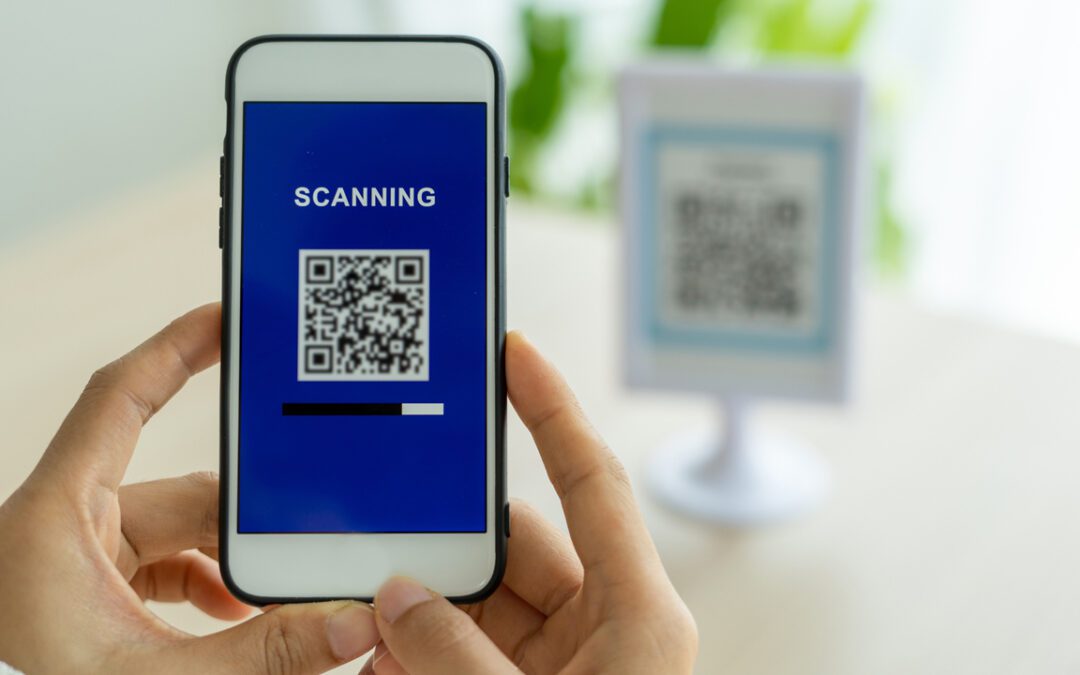Assisted living facilities are on the lookout for ways to streamline their check-in and health screening process. The industry was already struggling with persistent labor shortages and wage inflation when Covid hit. Paper-based form handling and storage are time consuming, error prone and not private. Paper forms don’t make contact tracing easier either.
QR-code-based digital apps emerged as a paperless, contactless and digital solution. Yet not all QR code apps are the same. Below you’ll find what you should be looking for before you invest. First, we’ll review how these QR code-based apps work from an administrator’s point of view as well as the visitor’s perspective.
How QR Code Based Apps Work
Most people now understand how QR code apps work because they’ve used them at restaurants or when entering public venues. If you’re responsible for setting it up at a facility, it’s more plex because you have to handle guests, healthcare providers, staff and residents.
With an app like Safe Site Check In, you can automate receptionist duties in just a few minutes. Visit their website, sign up with a credit card for a free trial, and print you own QR code poster. Within a few minutes, you will be checking in visitors, the most basic automation you need.
From the visitor’s perspective, they point their smartphone at the dedicated QR code on the poster. On the phone’s screen, they’ll be asked to fill out their contact information. Depending on the facility’s or the state’s protocols, visitors may be asked if they have been vaccinated or are feeling any flu-like symptoms. The sign-in process is complete in seconds and visitors, depending on how they respond to the questions, will receive a digital green screen to enter the facility. With Safe Site Check In, you get rid of the outdated paper sign-in book. Visitor information private is now kept private, it is more accurate, and you no longer need filing.
5 Requirements for Assisted Living Facilities
As you evaluate which QR code based app is right for your facility, here are five key criteria.
A dedicated QR code for each site entrance. Make sure the code is not one that’s pulled off the internet. You want a QR code generated specifically for each facility. You need to know who is or was visiting without worrying about security due to a questionable QR code.
Privacy, Security, Permanent. You want to be assured that personal information of guests and staff in the daily log remain private. As you evaluate vendors, ask where the check-in data is saved and who has access to it. The data should be securely stored immediately in the cloud and be immune to tampering.
Customization. Be sure you can automate most of a receptionist’s duties. That means you can appropriately check in guests, healthcare providers, staff and residents. You should be able to modify the check-in questions or create your own, including the ability to notify staff when visitors arrive. It’s a good idea to insert a picture of your facility and your logo on facility’s QR poster. That way, visitors know it’s approved and affiliated with the building.
Reports. It helps to run a regular report on visitor check-ins. This tells you how many people are in the building at any given time, and the frequency of guests for residents, and how long they stay, for example. It’s also helpful for facility management, capacity planning, and staffing. The data allows you to validate hourly wage claims and timecards.
Unlimited check in.. Look for a flat-fee based option instead of paying per visitor or based on the size of the facility.
As digital technology for facilities continues to evolve, assisted living homes are at the forefront of adopting it. It’s all part of their efforts to ensure they offer state of the art technology to keep residents and visitors safe and comfortable.

David Brian Ward is a CEO and Founder of Safe Site Check In LLC, a digital jobsite management platform launched in 2020 for the Construction industry. With over 40 years of experience in the technology industry, having launched and grown several successful companies. Mr. Ward is a now a SaaS entrepreneur and innovation leader in the Construction industry.

